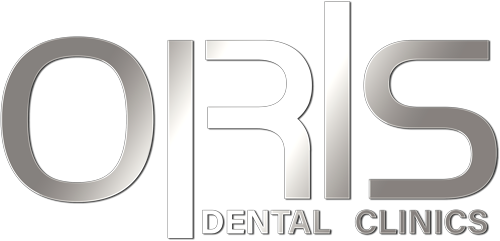Gum disease, known as periodontal disease, is a widespread dental problem affecting millions worldwide. Understanding the various stages of gum disease is critical for maintaining excellent oral health and preventing its progression.
Furthermore, we prioritize your dental health at ORIS Dental Clinics in Richmond Hill, Ontario. In this blog post, we will go over the many phases of gum disease, from mild gingivitis to severe periodontitis, and how each stage is diagnosed and treated.
Stage 1: Gingivitis - Early Gum Disease
Gingivitis is the most common form of gum disease and is frequently caused by poor oral hygiene. Moreover, plaque, a sticky film of bacteria accumulating on the teeth and along the gum line, can cause gum inflammation. The following are common signs and symptoms of gingivitis:
- Red, swollen gums
- Gums that bleed when brushing or flossing
- Persistent bad breath
- Tenderness or discomfort in the gums
Diagnosis
A dental exam is frequently used to diagnose gingivitis. Additionally, your dentist will check for symptoms of inflammation and may measure the depth of the spaces (pockets) between your teeth and gums, which should be shallow in a healthy mouth.
Treatment
The good news is that gingivitis is reversible with proper oral care. Your dentist may advise you to have a professional dental cleaning to eliminate plaque and tartar.
In addition, adopting a strict oral hygiene practice, which includes regular brushing, flossing, and using an antiseptic mouthwash, can also help manage and eliminate gingivitis.
Stage 2: Periodontitis - Mild Gum Disease
Gingivitis can progress to periodontitis, a more severe gum disease, if left untreated. During this stage, the inflammation damages the bone and soft tissues by extending more profoundly into the supporting structures of the teeth. The following are common symptoms:
- Gum recession
- Deeper pockets between teeth and gums
- Increased tooth sensitivity
- Tooth mobility
Diagnosis
Periodontitis is diagnosed by a more thorough dental examination that involves X-rays to assess bone loss and the extent of damage. In addition, your dentist will determine the severity of the gum disease.
Treatment
Dental professionals frequently employ scaling and root planing, a thorough cleaning procedure that eliminates tartar and plaque from below the gum line to treat mild periodontitis.
Moreover, they may prescribe antibiotics to help control an infection. Additionally, practicing good oral hygiene and frequent dental check-ups are critical to correctly managing this stage.

Stage 3: Periodontitis - Moderate to Severe Gum Disease
Periodontitis can worsen and cause more damage as it progresses. The following are signs of moderate to severe periodontitis:
- Further gum recession
- Significant bone loss
- Loose or shifting teeth
- Pus around teeth and gums
Diagnosis
Moderate to severe periodontitis diagnosis requires more advanced imaging and a thorough evaluation of the disease’s course.
Treatment
Treatment options for moderate to severe periodontitis may include flap surgery, bone grafts, tissue grafts, and guided tissue regeneration. Moreover, these treatments reduce pocket depth, restore lost bone, and promote gum tissue regeneration.
How to Maintain Good Gum Health
Preventing gum disease starts with a solid foundation of oral care:
Daily Dental Hygiene
Brush your teeth at least twice daily, floss daily, and use an antiseptic mouthwash.
Regular Dental Exams
Visit your dentist for regular check-ups and cleanings to detect problems early.
Healthy Lifestyle
To support overall health, avoid smoking, manage stress, and eat a balanced diet.
At ORIS Dental Clinics, we are dedicated to assisting you in maintaining optimal gum health. Furthermore, our skilled team is ready to provide personalized treatment strategies and educate you on gum disease prevention at every stage.
Don’t wait until gum disease worsens; call us immediately for expert dental care in Richmond Hill, Ontario. Your smile and your health are both worth it!




